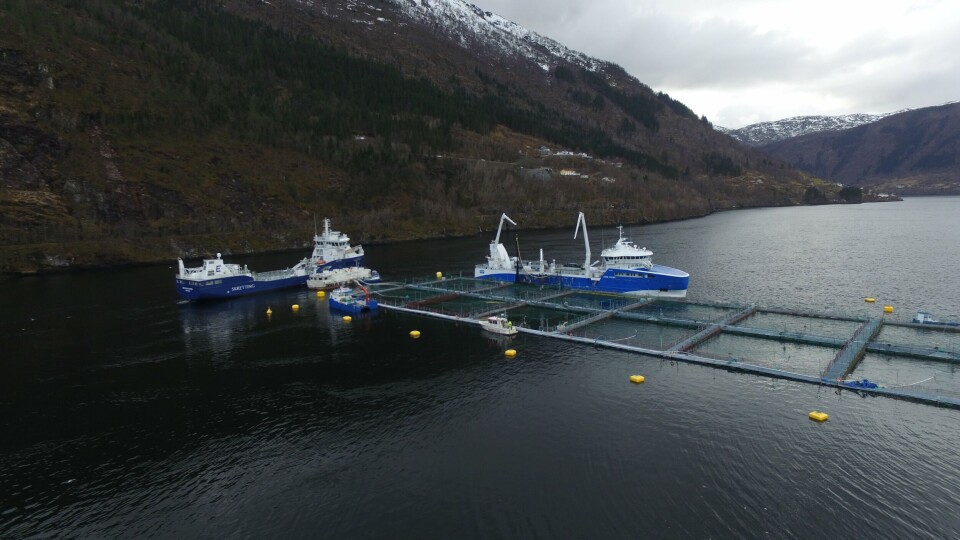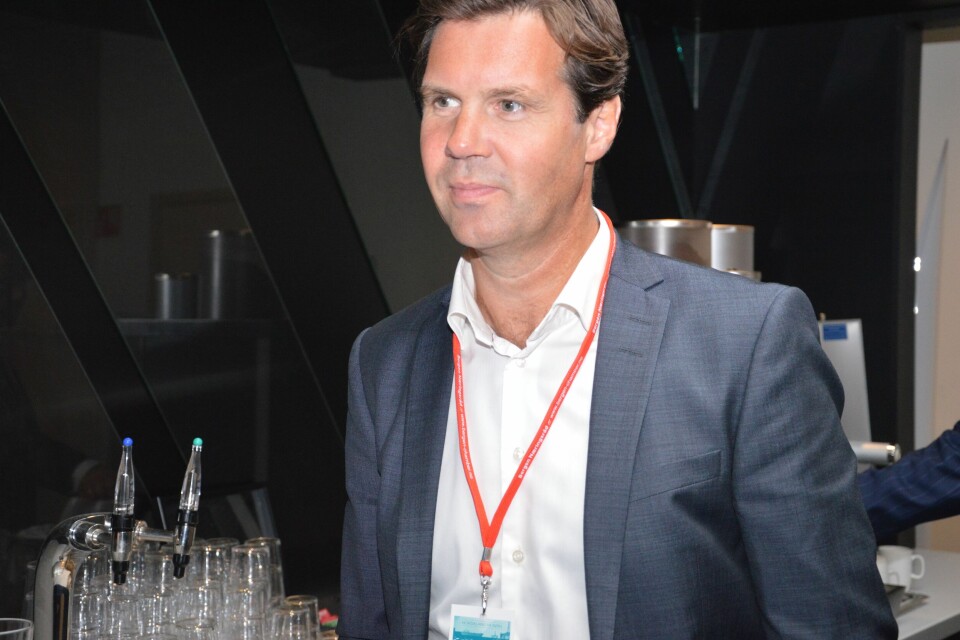
Lerøy reports record profits despite high costs
Lerøy Seafood Group has reported record Q1 profits but warned that costs remain “extremely high”.
The group reported operating profit before fair value adjustments related to biological assets of NOK 1,277 million, compared with NOK 584 million in Q1 2016.
Chief executive Henning Beltestad said: “For the first quarter of 2017, Lerøy Seafood Group can report their highest revenue and best operating profit of any quarter throughout the group’s history. The salmon and trout prices have remained very high throughout the first quarter and are the most significant driver behind the record result reported by the group. However, release from stock costs remain at a high level and we are working hard to reduce these costs.
“With the acquisitions of Havfisk and Norway Seafoods, LSG is now Norway's largest corporation within whitefish and has a major position within whitefish on a global scale. 2017 has gotten off to a great start, and the outlook is very promising.”
LSG’s revenue increased from NOK 3,815 million in Q1 2016 to NOK 5,459 million in Q1 2017. Compared with Q1 2016, slaughter volumes of salmon and trout increased by 13%. Profit before tax and before fair value adjustments related to biological assets was NOK 1,294 million in Q1 2017, compared with NOK 592 million in Q1 2016.
High volumes in farming
Operating profit before fair value adjustments related to biological assets reported by the farming segment increased from NOK 522 million in Q1 2016 to NOK 1,047 million in Q1 2017. The farming segment harvested a total of 43,307 GWT salmon and trout in Q1 2017, up 13% from the same period in 2016. EBIT/kg increased from NOK 13.7 per kg in Q1 2016 to NOK 24.2 per kg in Q1 2017.

In Q1 2017, Lerøy Aurora achieved operational EBIT per kg of NOK 29.8. Lerøy Midt and Lerøy Sjøtroll are reporting EBIT per kg of NOK 24.1 and NOK 22.1 respectively for the same period.
“It is good to finally confirm that trout prices, after almost three very difficult years, have seen a substantial improvement. At the time of writing, the spot price for trout is higher than for salmon, although the prices realised for trout in Q1 2017 are marginally lower than for salmon due to contracts," said Beltestad. "During the first quarter, the Group increased its volume of salmon and trout by 13% when compared to the same period last year. The contract share in the first quarter was 32%.
"From a historical perspective, the release from stock costs for salmon and trout are extremely high, and there is in particular a considerable potential to reduce costs related to compliance with statutory limits for salmon lice. The group has implemented a number of measures and investments to realise this potential, and developments to date in 2017 are positive.”
Wild catch and value added
Havfisk's total catch volume in Q1 2017 was 20,586 tonnes, compared with 16,169 tonnes in Q1 2016. Lerøy Norway Seafoods' primary business is processing wild caught whitefish. The total contribution to operating profit made by these two companies in Q1 2017 was NOK 158 million.
The VAP, Sales and Distribution segment reported operating profit up from NOK 71 million in Q1 2016 to NOK 86 million in Q1 2017.
Market and outlook
The board of directors reported: “The group is in a transitional phase within production of salmon and trout, with extraordinarily high direct and indirect treatment costs, combined with increasing costs for prevention. Prevention costs are expected to increase in 2017, while costs related to treatment are expected to fall.
“From a long-term market perspective, the Norwegian fish farming industry is in a challenging situation at the start of 2017, as lack of growth in volume has resulted in very high prices. The Norwegian fish farming industry will only be able to retain its global competitiveness over a time frame of the next five to ten years if framework conditions facilitate growth in production in Norway. Framework conditions of this nature must be based on an understanding of environmental sustainability and value generation.”
The group estimates a total harvest volume of 180,000 GWT salmon and trout for 2017, including LSG's volume from associates and a wild catch volume in excess of 60,000 tonnes. Harvested volume of salmon and trout is expected to be significantly lower in Q2 2017 when compared with both Q1 2017 and Q2 2016. The directors expect results before fair value adjustments in Q2 2017 to be substantially lower than in Q1 2017, but at the same time that the results before fair value adjustments for 2017 to be higher than in 2016.























































